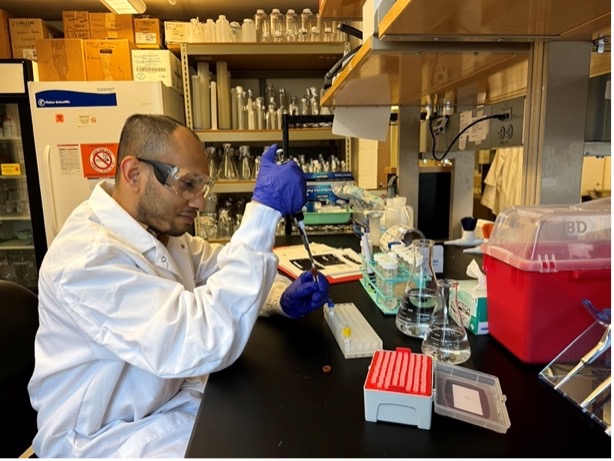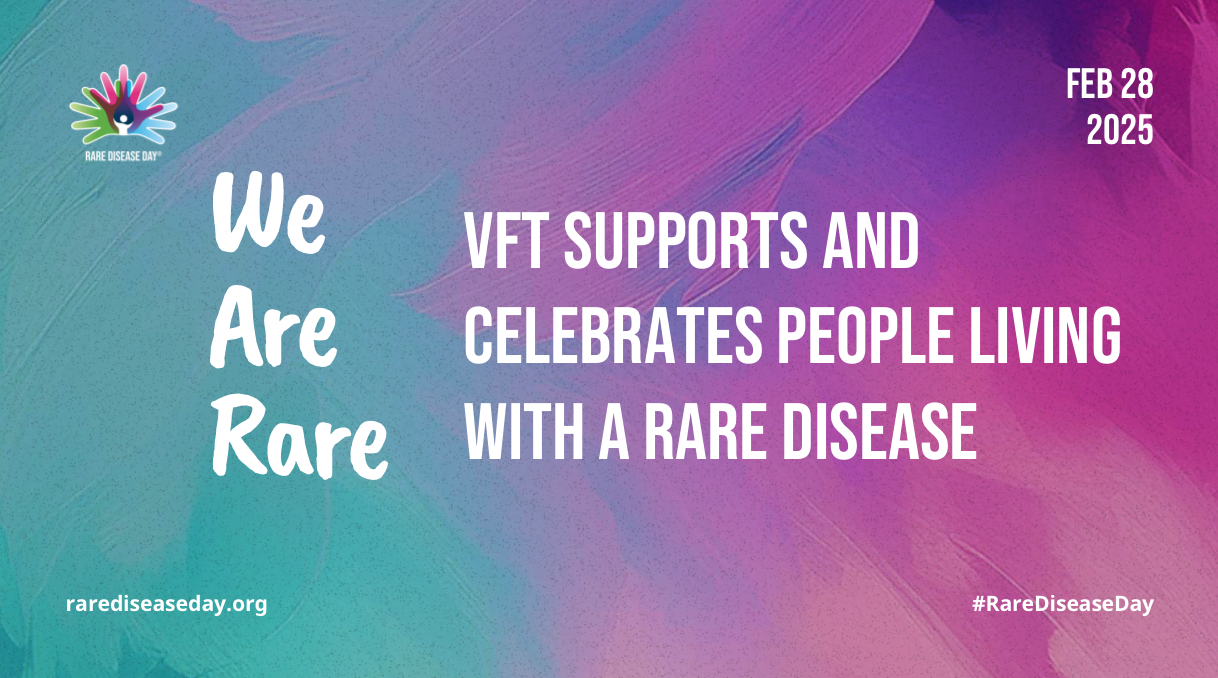Acuity – Clinical measurement of the ability to see fine visual detail.
Albinism – A genetic disorder causing a decrease in melanin, the protein that pigments the eye, hair and skin.
Amblyopia – Poor or blurry vision in an eye that is physically normal. Often caused by a sustained period of disuse, such as occurs with uncorrected strabismus.
Aniridia Fibrosis – A fibrotic tissue formed in the anterior chamber of an eye with aniridia.
Anterior Chamber – The chamber on the front of the eye covered by the cornea.
Aqueous Humor – Fluid produced in the eye which carries nutrients to and takes waste product away from the lens and cornea.
Astigmatism – Condition in which the eye is more oval than round, leading to a skewing of light rays and an inability to focus properly on the retina.
Autosomal Dominant – A trait that is expressed when present on only one of the two genes (not needed on both copies). Autosomal refers to the non-sex (X or Y) chromosomes.
Bioptic – A small telescope mounted in the lens of a pair of glasses to aid vision.
Carrier – A person who has one abnormal gene and one functional gene. The functional gene overrides the abnormal gene and so the person does not show signs of the disease.
Cataract – An opacity (dark spot) on or in the lens.
Chediak-Higashi Syndrome – A very rare form of albinism associated with immunodeficiency. Also known as CHS.
Ciliary Body – The part of the eye containing the ciliary muscle and ciliary processes. The ciliary muscles are responsible for shaping the lens to focus light on the retina. The ciliary processes produce aqueous humor.
Closed-Angle Glaucoma – Type of Glaucoma caused by a blockage of the drainage system.
Congenital – A condition that is present at birth.
Cornea – The transparent (clear) structure in the front of the eye.
Corneal Pannus – Scarring of the cornea.
Deletion – In genetics, loss of a portion of a chromosome.
Diabetes – A condition characterized by the inability to regulate blood glucose due to impaired insulin secretion or increased insulin resistance.
Esotropia – A form of strabismus in which one or both eyes turn inward.
Exotropia – A form of strabismus in which one or both eyes turn outward.
EUA – Stands for Exam Under Anesthesia. Typically an exam done with the aid of sedation for a more accurate assessment.
Familial – Occurring in or affecting multiple members of a family.
Far-Sightedness – This is also referred to as hyperopia. In this condition, the eye is too short, so images focus behind the retina. This leads to a decreased ability to focus on objects that are near.
Fovea – The area of the retina responsible for our central, sharpest vision. It is typically in the center of the macula and should be a small pit.
Foveal Hypoplasia – A fovea which is poorly formed or absent. This leads to a decreased visual acuity.
Glaucoma – Eye disorder characterized by an increase in intraocular pressure leading to pressure on the optic nerve.
Griscelli Syndrome – This is an extremely rare form of albinism associated with immunodeficiency and neurological problems.
Hermansky Pudlak Syndrome – This is a rare form of albinism associated with abnormal bleeding, lung problems and intestinal disorders. Also known as HPS.
Hypopigmentation – A decrease in coloration or amount of pigment.
IEP – Individual Education Plan. This is a yearly meeting of teachers, parents and specialists to determine a child’s educational needs.
Intraocular Pressure – The fluid pressure inside the eye.
Iris – Iris is the colored part of the eye. It controls the amount of light entering the eye.
Legally Blind – This is a term that indicates vision that is not correctable to better than 20/200.
Lens – Clear part of the eye behind the iris that helps to focus images on the retina.
Low Vision – Low vision is used to describe partial sight, or sight that is not fully corrected by glasses, contact lenses, medical treatments or surgery. For some, low vision involves a lack of visual acuity, or sharpness. For others, it affects their ability to distinguish colors, perceive contrasts or distinguish objects. Either way, people with low vision find it more challenging to perform everyday activities such as reading, writing or even recognizing a familiar face.
Macula – An oval spot near the center of the retina responsible for the central highest acuity vision.
Melanin – The protein responsible for pigmentation of the skin, eyes and hair.
Mutation – In genetics, a change (not removal) of part of a chromosome.
Myopia – See Near-Sightedness
Near-Sightedness – This is also referred to as Myopia. In this condition, the eyeball is too long, so images focus in front of the retina. This leads to a decreased ability to focus on objects that are far.
Null Point – People with nystagmus typically have a head position in which their nystagmus is decreased and their vision is best. This is the null point.
Nystagmus – A rapid, involuntary rhythmic eye movement.
Ocular Albinism – Also known as OA. A form of albinism affecting only the eyes, primarily seen in boys.
Oculocutaneous Albinism – Also known as OCA. A form of albinism affecting the skin, hair, and eyes. Several subtypes known – see “What is Albinism” section for more detail.
Open Angle Glaucoma – Glaucoma in which the angle of the anterior chamber remains open but the drainage system is dysfunctional.
Ophthalmologist – A medical eye doctor (has a M.D.).
Optic Chiasm – An area between the eyeball and the brain where the optic nerve splits into fibers which are then routed to the brain.
Optic Nerve – Optic Nerve is the nerve that connects the eyeball to the brain.
Optic Nerve Hypoplasia – A condition in which a person is born with a small, underdeveloped optic nerve.
Optometrist – This is a doctor who fits glasses and contacts. Does not have a M.D.
P-protein – A protein involved in melanin production. This is abnormal in OCA2.
Retina – Retina is a thin layer of cells in the back of the eyeball that converts light into a signal which the brain interprets as visual input.
Retinal Pigment Epithelium – Retinal Pigment Epithelium is a layer of the retina also known as the RPE. These cells contain the melanin necessary for processing the visual stimulus. This is abnormal in albinism.
Sporadic – Occurring spontaneously, without any history.
Strabismus – Also known as “Lazy Eye”. This is a disorder of the eye muscles in which the eyes do not point in the same direction.
Tonopen – An electronic pen-like instrument used to determine intraocular pressure by tapping the cornea after numbing the eye with drops.
Trabecular Meshwork – An area of tissue located around the base of the cornea responsible for draining the aqueous humor from the eye via the anterior chamber.
Trabeculectomy – A surgical procedure used in the treatment of glaucoma to relieve intraocular pressure by removing part of the trabeculum.
Trabeculotomy – A more invasive surgical procedure used in the treatment of increased intraocular pressure in glaucoma, in which a new drainage angle is made to allow the aqueous humor to drain more effectively.
Tyrosinase – The enzyme that converts tyrosine into melanin.
Tyrosine – An amino acid which is converted into melanin.
VEP – VEP stands for Visual Evoked Potential. It tests the function of the visual pathway from the retina to the area of the brain responsible for interpreting visual input. It is done by flashing lights of different patterns in front of a person’s eyes and measuring the response in the brain.
White Blood Cells – Cells which are typically responsible for fighting infections.
Wilms’ Tumor – A malignant tumor of the kidneys.




